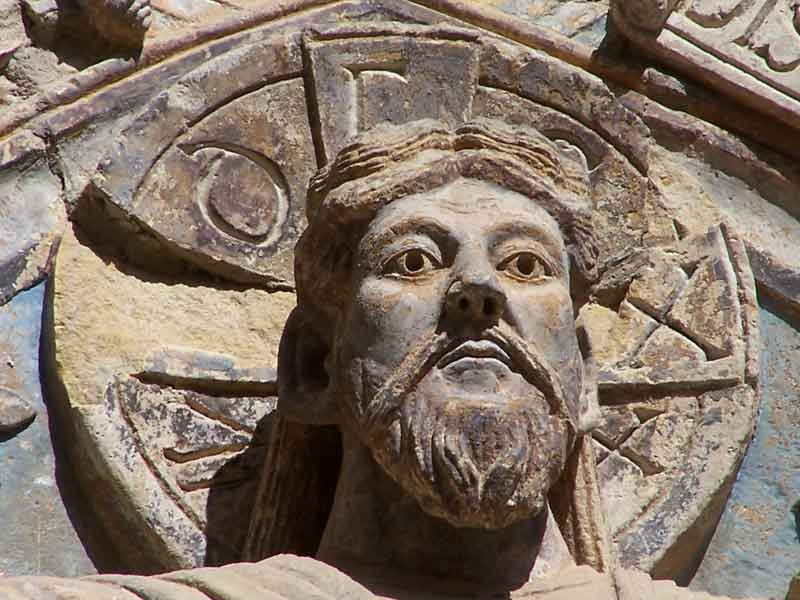The Conques tympanum therefore ends with an admonition which invites the pilgrim to correct his behavior: O PECCATORES TRANSMUTETIS NISI MORES IUDICIUM DURUM VOBIS SCITOTE FUTURUM (O sinners, unless you reform your morals, know that the future judgment will be harsh for you). This warning respond to the exhortation in the Acts of the Apostles: “Repent, then, and turn to God, so that your sins may be wiped out, and thus the Lord may bring in the time of respite. He will then send the Messiah who was destined for you, Jesus. Heaven must receive him until the time comes for God to restore everything, as he promised long ago through his holy prophets." (Act 3:19-21) We find in this extract the concept of universal restoration (i.e. apocatastasis), which Origen defended, as an ideal to achieve. But is this really the theory of the Conques tympanum? Well no ! and it is the gestures of Christ which signify this to us. |
|
| A retracted thumb, an uneven wave count and the silence of Tartarus | |
It is necessary to note a small detail, discreet but full of meaning: the retracted thumb of the left hand of Christ, the one which pours out the Graces of the Lord on Humanity. This withdrawal means that the granting of Grace is neither absolute nor universal. |
 The retracted thumb: a restriction in the granting of Grace |
In Conques, hell is indeed promised to the ungodly and to those who do not repent. |
 |
| The titulus which supports the floor of the lower register of Tartarus constitutes an exception: it bears no text and remains silent. The last word of the last verse of this sculptural sermon stops in fact right at the gate of hell: beyond there reigns a deafening silence. (1) | |
| An eternal Present | |
The parousia being "an eternal Present", (2) the tympanum of Conques holds up to us a mirror where we can recognize ourselves, here and now and delivers us a perfectly audible message eight centuries after its creation. |
 |
At the end of this approach, the tympanum of Conques - which marks the apogee of the Abbey of Conques - appears above all as an essential step in the history of Art and Civilizations. Far from being a “barbaric” work from a “rude era” as Prosper Mérimée said, (3) this Masterpiece of Romanesque statuary would rather be the Paragon of the Romanesque Renaissance.
|
|
The Tympanum bears marks of the influence of monastic schools (ancestors of universities), notably that of the abbey of Saint-Victor in Paris where the great pedagogue, theologian and naturalist Hugh of Saint Victor, adept in the dialogue between faith and reason, lays the foundations of a teaching based on knowledge and reasoning. He was an early Humanist. He gave birth to scholasticism drawing its didactic methods, its rhetoric, its hermeneutics, its literary and poetic talents and even its mnemonic devices from the authors of Antiquity. (4) … |
 Monastic School |
|
 |

